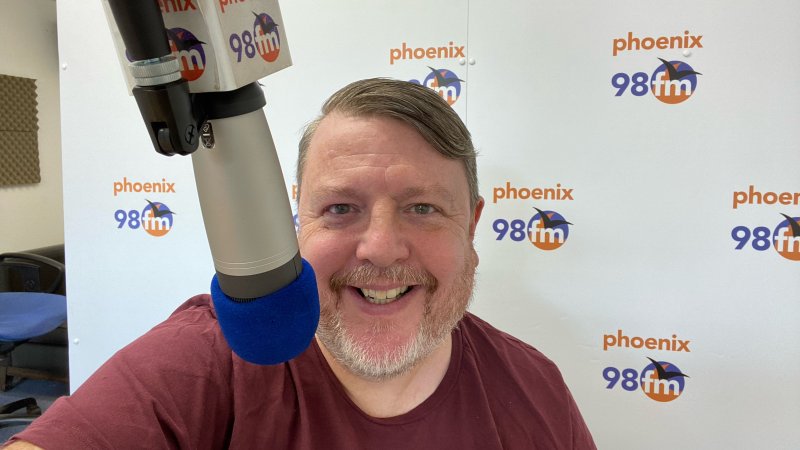Monday 30th January – Today I covered lots of local news, weather update and ususal events and traffic updates.
Tuesday 31st January – Health feature of the week
Most people jump straight into exercise, think of the latest craze – ZUMBA. Often participants have done no former core or stability work, this may be the only type of exercise they regularly do, and the workout is not tailored to their individual needs. Although we can feel immediate pain if we have caused serious damage, often less severe damage can be done without us realising at the time, whilst we’re lost in the concentration and excitement of the class. Sometimes its not until months down the line that we start to get reoccurring symptoms of a niggling pain/discomfort.
Stretching & Opening
In this modern age of repetitive movement and habitual life-style patterns, the majority of have muscle imbalances – short/tight muscles, long/weak – pulling on joints and structures, causing pain, limited movement, trapped free-radicals and other waste products, inadequate blood flow, and reduced self tissue and cell repair. We can help improve the situation by stretching tight muscles and strengthening the weak. Opening poses (often derived from Yoga) can be one method of achieving this and this can help open the energy flows throughout the structure of the body. (Poses are subjective). Its important that you do positions/stretches that are right for you. For example a tennis player will benefit from different positions or stretches, than those of a gardener.
Pelvic tilting and a range of abdominal and core engaging using a variation of positions and movements will help ensure you muscles and ligaments surrounding the spine are less at risk when going about your daily tasks. Pelvic floor training should be incorporated – it is never too late to educate and rehabilitate the pelvic floor surrounding core following childbirth. Many women still have weak pelvic floor muscles and abdominal separation years following childbirth, due to doing either no post-natal exercises or not doing them correctly. Many cases of incontinence could have been prevented if sufficient pelvic floor and other areas of core strength had been addressed at an earlier stage. Pelvic floor weakness can often be improved even if symptoms are already present.
Core training should also incorporate balance training and movements on unstable surfaces to educate the core to remain strong during imbalanced movements, when very tired, or when walking around in poor lighting. It can also improve proprioception – awareness of where your body is in relation to everything surrounding it – this helps us be more aware and therefore likely to correct our posture throughout the day.
Muscle, ligament and bone strength
Now we integrate the core strength with limb movement when having to exert force so that daily life becomes easier and our spine and joints remain in a better condition as we demand their use on a daily basis. Bone density can be increased/maintained and muscle tissue can also be maintained. If we do not stimulate each and every one of our muscles they will slowly waste away, resulting in immobility, overly strained joints and a lowered metabolism. If we fall, we will be less likely to be able to pick ourselves up off the floor.
Variety
So we are now getting the core to work in unison with the limbs. The more we do this consciously, the more it will become a subconscious part of our learnt behaviour and we will do it without thinking, which is great for moments in life when we are active yet distracted! (most of the time). We want to challenge the body so it keeps adapting with various exercises and training tools such as weights, resistance bands, body weight exercise, slow controlled movements, faster movements, some that get you puffed out, others that require concentration and less effort.
Keep it fresh – learning lots of new exercises to stimulate the body and the brain (remember your body’s instinct is always to conserve (save) calories due to risk of not finding food in Palaeolithic times). And keeping your body supple, resting, providing adequate nutrition (more on that next!) and muscle and tissue rehabilitation.
Wednesday 1st February:
Deb Finck came in to chat with me about her current career editing Raring2Go magazine for activites and articles for families to do together. Deb told me why she was attracted to the flexible working and what she enjoys about the job. She is also looking for someone to team up with her in her role and there is also an opportunity to buy the business position off her call 01277 200383 Mobile: 07761 793734 to speak to Deb and listen again here Chatting to Deb Finck from Raring to Go
Thursday 2nd February:
I was joined by Keith Brown from FSB to chat local business news for Brentwood and Billericay areas. Keith was also kind enough to answer a question sent in from a local shop owner on his opinion on Mary Portas’ Consultation document. Listen again here FSB on local business news and opinion on Mary Portas’ Consultation
Friday 3rd February:
Danny Davis from the chartered institute of plumbing and heating engineers joined me to offer listeners tips on how to keep their central heating systems up and running over the cold winter months and what new boiler owners should be aware of in the way boilers are now fitted. Listen again




























